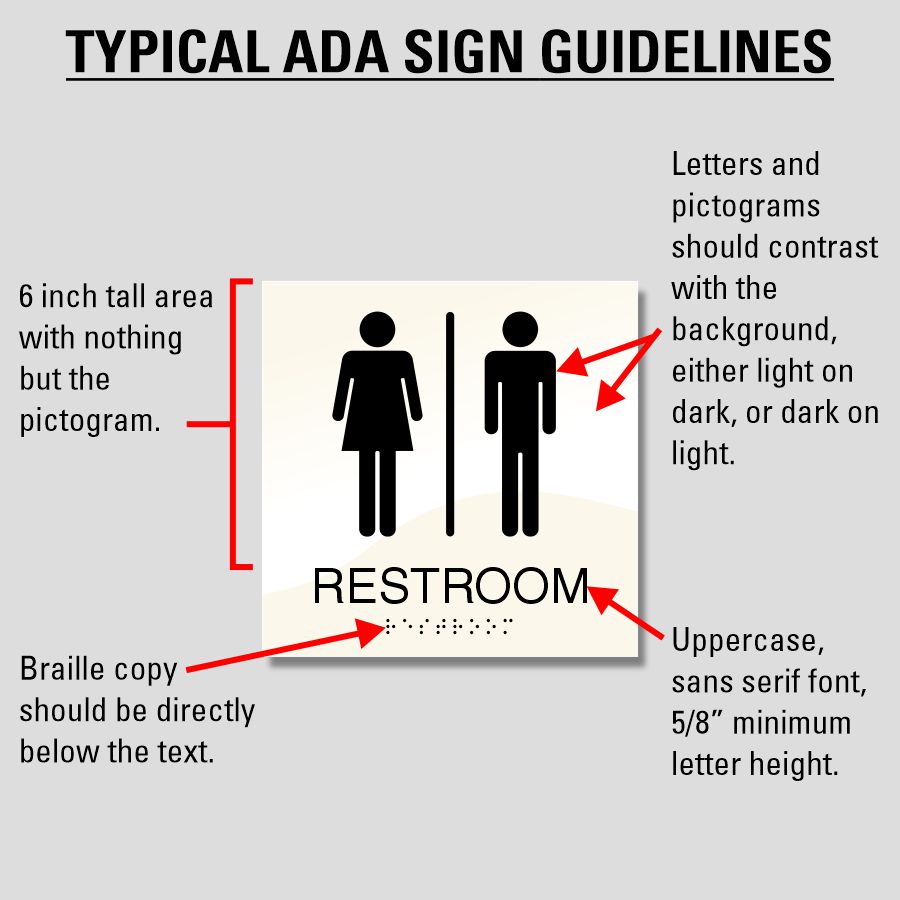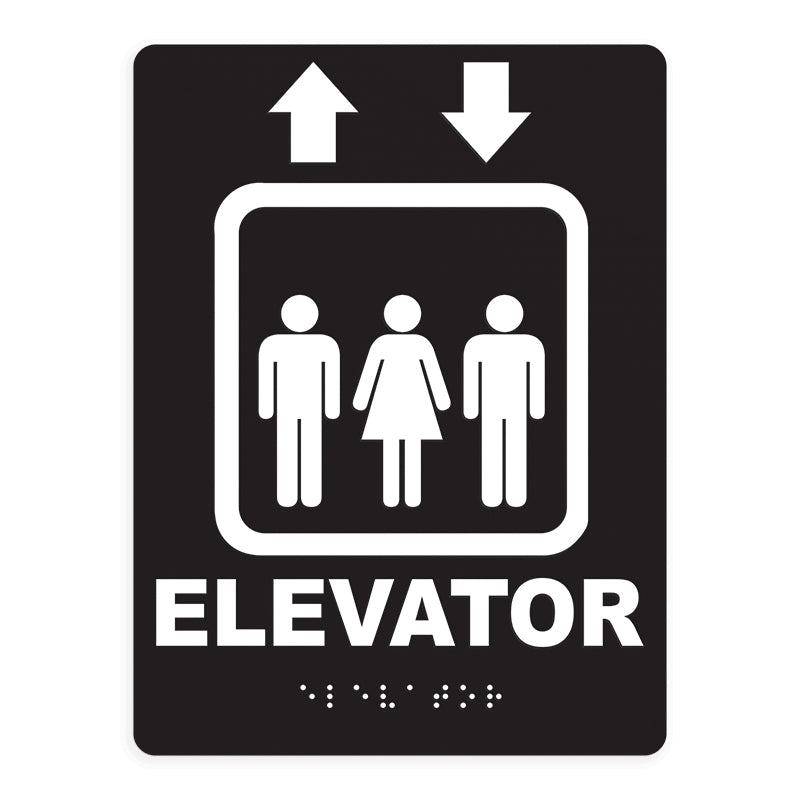The Duty of ADA Signs in Adhering To Ease Of Access Standards
The Duty of ADA Signs in Adhering To Ease Of Access Standards
Blog Article
Discovering the Key Functions of ADA Indicators for Boosted Access
In the world of accessibility, ADA indicators serve as silent yet effective allies, guaranteeing that rooms are navigable and comprehensive for individuals with specials needs. By incorporating Braille and responsive aspects, these signs break obstacles for the visually impaired, while high-contrast shade plans and clear typefaces cater to varied aesthetic needs.
Value of ADA Conformity
Making sure compliance with the Americans with Disabilities Act (ADA) is essential for cultivating inclusivity and equivalent access in public rooms and workplaces. The ADA, enacted in 1990, mandates that all public facilities, employers, and transport solutions suit people with impairments, ensuring they take pleasure in the same legal rights and possibilities as others. Conformity with ADA standards not only satisfies lawful obligations but additionally improves a company's credibility by showing its commitment to variety and inclusivity.
One of the vital aspects of ADA conformity is the execution of accessible signage. ADA signs are designed to ensure that individuals with disabilities can easily browse through structures and areas.
In addition, adhering to ADA policies can minimize the danger of prospective fines and lawful repercussions. Organizations that stop working to abide with ADA guidelines might encounter lawsuits or penalties, which can be both economically challenging and harmful to their public photo. Hence, ADA conformity is important to cultivating a fair atmosphere for everyone.
Braille and Tactile Aspects
The consolidation of Braille and tactile elements right into ADA signs personifies the concepts of ease of access and inclusivity. These functions are vital for individuals that are visually impaired or blind, enabling them to browse public rooms with higher independence and self-confidence. Braille, a responsive writing system, is necessary in giving composed info in a format that can be quickly perceived with touch. It is usually placed under the corresponding message on signs to make certain that individuals can access the details without visual aid.
Responsive aspects prolong past Braille and consist of increased signs and personalities. These components are developed to be noticeable by touch, permitting people to determine space numbers, washrooms, leaves, and other essential areas. The ADA establishes specific standards relating to the dimension, spacing, and positioning of these tactile aspects to enhance readability and make certain consistency throughout different environments.

High-Contrast Color Schemes
High-contrast shade schemes play a critical duty in boosting the presence and readability of ADA signs for individuals with aesthetic impairments. These plans are essential as they make best use of the difference in light reflectance between message and history, making sure that view indicators are easily noticeable, even from a range. The Americans with Disabilities Act (ADA) mandates using certain color contrasts to suit those with restricted vision, making it a critical aspect of compliance.
The effectiveness of high-contrast shades exists in their ability to stand apart in different lighting conditions, including dimly lit atmospheres and locations with glare. Normally, dark message on a light history or light message on a dark history is utilized to achieve ideal contrast. For circumstances, black text on a yellow or white background offers a plain visual difference that aids in fast recognition and comprehension.

Legible Fonts and Text Size
When taking into consideration the layout of ADA signs, the choice of legible font styles and appropriate text size can not be overemphasized. These aspects are essential for ensuring that indicators come to people with visual problems. The Americans with Disabilities Act (ADA) mandates that font styles have to be sans-serif and not italic, oblique, script, extremely ornamental, or of unusual kind. These needs assist make certain that the message is easily legible from a distance which the personalities are distinct to diverse audiences.
According to browse around this site ADA standards, the minimum message height need to be 5/8 inch, and it ought to enhance proportionally with viewing range. Consistency in message size adds to a cohesive aesthetic experience, helping individuals in browsing atmospheres efficiently.
Moreover, spacing in between letters and lines is essential to clarity. Appropriate spacing stops characters from showing up crowded, enhancing readability. By adhering to these criteria, developers can dramatically enhance accessibility, guaranteeing that signs serves its designated purpose for all people, despite their visual abilities.
Effective Placement Methods
Strategic placement of ADA signage is vital for maximizing ease of access and making sure conformity with legal standards. ADA standards stipulate that signs ought to be mounted at an elevation in between 48 to 60 inches from the ground to guarantee they are within the line of sight for both standing and seated individuals.
Additionally, indications must be put adjacent to the lock side of doors to enable very easy recognition prior to access. Uniformity in sign positioning throughout a facility improves predictability, lowering confusion and boosting general user experience.

Conclusion
ADA indications play a crucial role in advertising accessibility by integrating features that deal with the needs of individuals with specials needs. These components collectively foster a comprehensive setting, highlighting read more the relevance of ADA compliance in guaranteeing equal gain access to for all.
In the realm of accessibility, ADA signs offer as quiet yet powerful allies, ensuring that areas are accessible and inclusive for individuals with disabilities. The ADA, established in 1990, mandates that all public facilities, employers, and transportation solutions fit people with specials needs, guaranteeing they enjoy the same civil liberties and chances as others. ADA Signs. ADA signs are made to make sure that individuals with impairments can quickly browse via areas and structures. ADA standards state that indications should be placed at a height in between 48 to 60 inches from the ground to ensure they are within the line of view for both standing and seated people.ADA indications play an important duty in promoting accessibility by incorporating features that address the demands of individuals with specials needs
Report this page